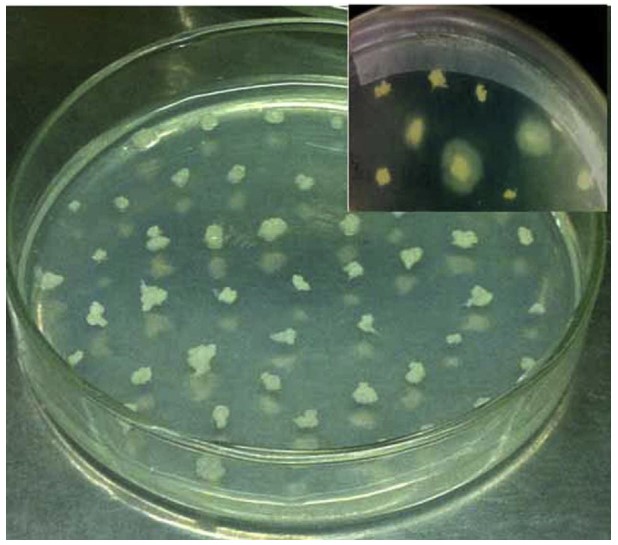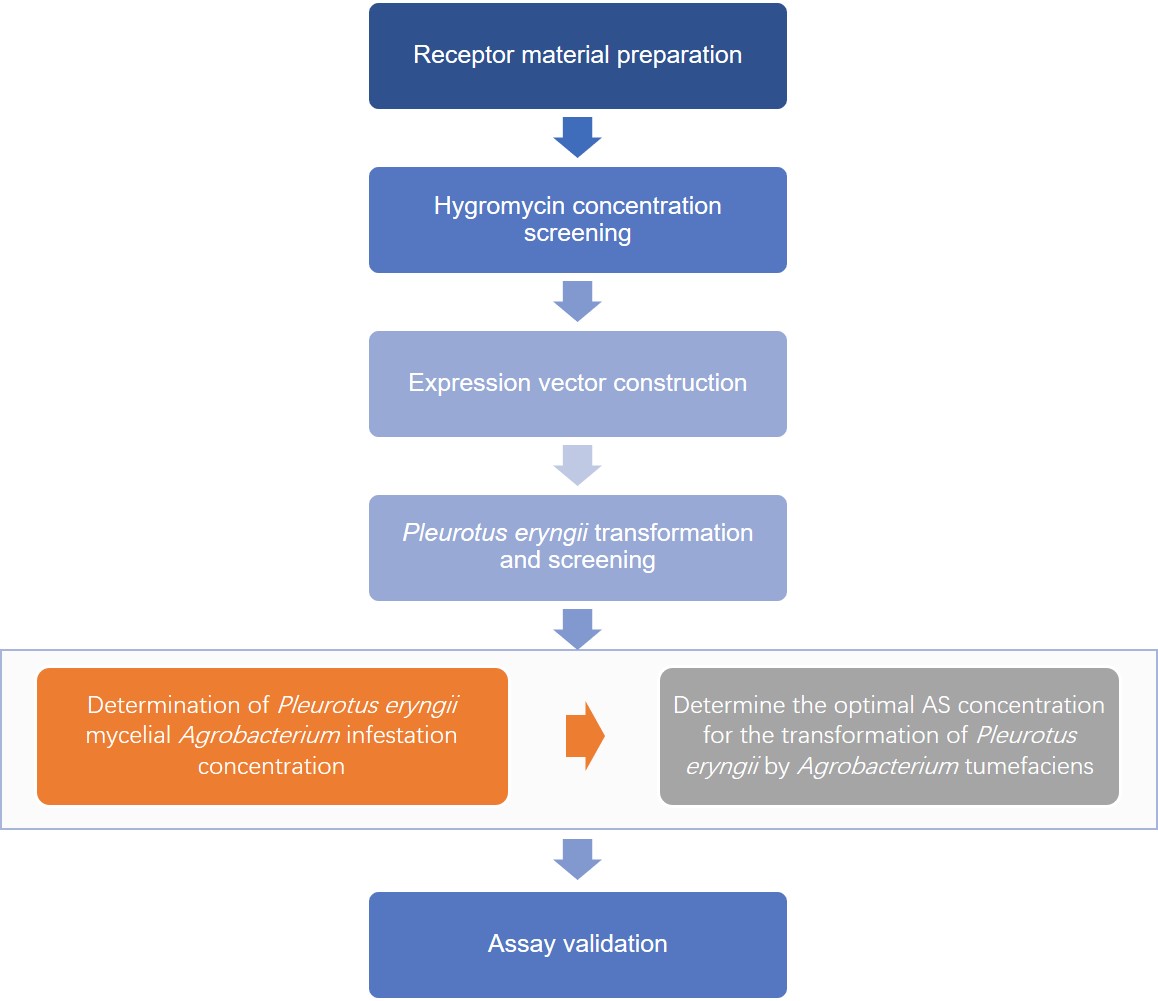Pleurotus eryngii is an important edible fungus of Pleurotus, the flesh of the fungus is thick, crisp, and tender, especially the stalk is dense, firm, and creamy, which can be entirety eaten, and the stalk is crisper and smoother than the cap, with the flavor of almond and the taste of abalone. And Pleurotus eryngii is rich in nutrition, rich in various essential amino acids, protein, fungal polysaccharides, and other nutrients.
The genetic transformation and functional research of Pleurotus eryngii have become a hot spot, and the commonly used genetic transformation methods include PEG-mediated transformation, restriction endonuclease-mediated DNA transformation, gene gun transformation, electro-excitation transformation, and Agrobacterium tumefaciens-mediated genetic transformation. Among them, Agrobacterium tumefaciens-mediated genetic transformation is a natural transformation vector system with the advantages of easy operation, no complex instrumentation, low transformation cost and high transformation efficiency, easy access to single-copy transformation strains, high reproducibility, and flexibility in the selection of recipients for edible bacteria transformation. Therefore, Lifeasible provides Agrobacterium-mediated genetic transformation of Pleurotus eryngii mycelium as the recipient and Hygromycin (HygR) as the screening marker to build a stable genetic transformation system.
 Figure 1. Screening of Pleurotus eryngii transformants. (Wang Y, et al. 2016)
Figure 1. Screening of Pleurotus eryngii transformants. (Wang Y, et al. 2016)
The use of homologous promoters not only facilitates the recognition of regulatory factors and reduces methylation, but also the use of homologous promoters not only facilitates the recognition of regulatory factors and reduces methylation, but also facilitates the recognition and binding of host cell RNA polymerase and the improvement of transformation efficiency. So Lifeasible recommends the use of the Pleurotus eryngii endogenous gpd promoter to improve transformation efficiency. Because different strains of Agrobacterium can also affect the genetic transformation efficiency, we prepared a variety of Agrobacterium strains such as GV3101, EHA105, and AGL-1 for use in the experiment. In addition, we also provided vectors such as pCAMBIA1304, pUPT, pDHK-pHsp70, and pEGFP-hph for use in the experiment.

The recombinant plasmid was transferred into Agrobacterium tumefaciens, and the target gene was transferred into Agrobacterium tumefaciens by Agrobacterium tumefaciens-mediated method using Pleurotus eryngii mycelium as the recipient material. Agrobacterium concentration is an important factor affecting Agrobacterium transformation, too low a concentration of Agrobacterium will affect the transformation efficiency, while the too high a concentration of Agrobacterium will cause Agrobacterium overgrowth in the process of resistance screening, and therefore cannot inhibit the growth of Agrobacterium, which will eventually affect the growth of transformants and cause the reduction of transformation rate. Therefore, Lifeasible will determine the optimal Agrobacterium transformation concentration in the experiment and solve all your research problems. This is a very complete and mature system, and Lifeasible technical team has a lot of experience.
References:
Lifeasible has established a one-stop service platform for plants. In addition to obtaining customized solutions for plant genetic engineering, customers can also conduct follow-up analysis and research on plants through our analysis platform. The analytical services we provide include but are not limited to the following:
Get Latest Lifeasible News and Updates Directly to Your Inbox
Adaptive Evolutionary Mechanism of Plants
February 28, 2025
Unraveling Cotton Development: Insights from Multi-Omics Studies
February 27, 2025